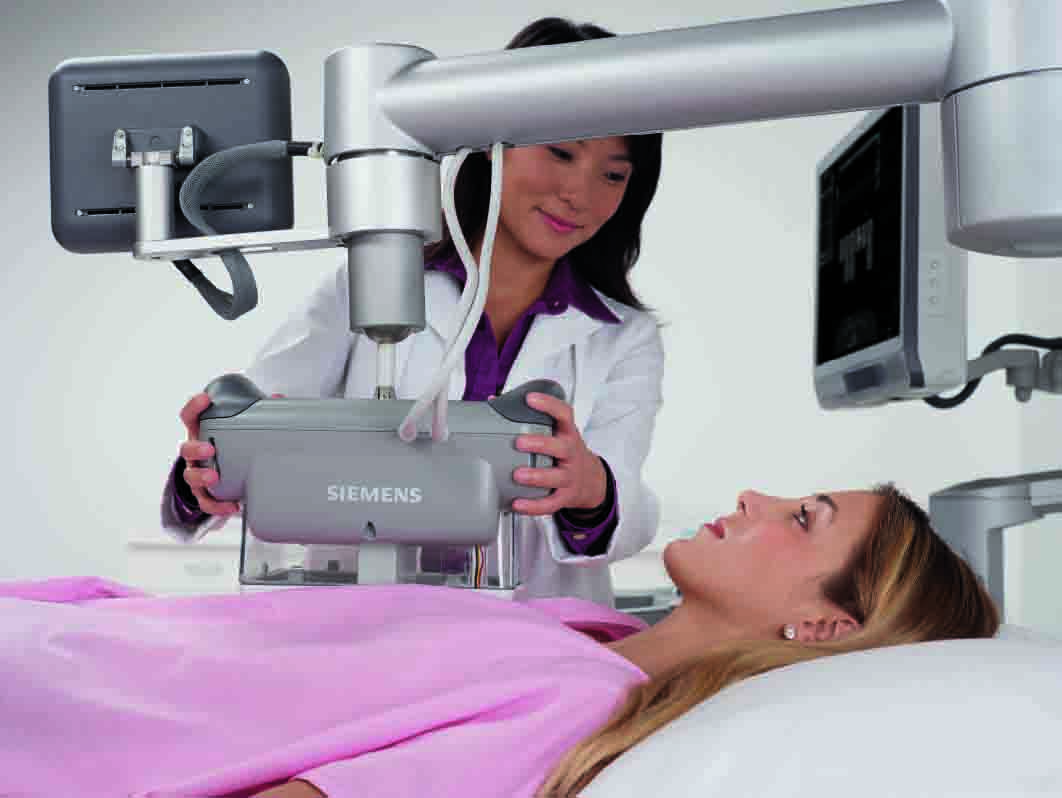
06 Oct HERE NOW: Latest Technology in Breast Cancer Detection
Every year we hear more about the latest study on mammograms and their value in detecting breast cancer. The mixed messages from one study to another and from one physician to another can be confusing and frustrating. Yet no one disputes the importance of early detection.
What is easy to understand is that detecting cancer early leads to earlier treatment which has a direct effect on outcomes. The earlier you begin treatment the less advanced the cancer is and the more likely you are to have a good result from treatment. While treating cancer isn’t that simple, the fact remains that catching cancer at the earliest possible moment is the best possible scenario.
Who do I talk to about breast cancer screening?
Talk with your physician and make sure he or she has a complete history to best assess your personal health. Additionally, a simple online tool is available that may help identify your risk level. Complete the tool, print the report and take it to your physician where you can discuss those findings together. Find the tool at www.cancer.gov/bcrisktool/
The American Cancer Society recommends that women have annual mammograms beginning at the age of 40. However because each individual is unique, the common and most universal practice is not always one-size-fits-all. Some may begin screenings earlier and perhaps some later. It may be confusing but the good news is your health care provider is your advocate who can help you wade through all the different messages and discern the best plan for you.
What’s the latest news regarding breast cancer screening?
More sophisticated technology has led to even earlier detection, and that is exciting for today’s women – and men!
Mammography remains the gold standard for breast health. Although an excellent screening tool, mammography does have limitations particularly with dense breast tissue where small cancers hide making detection difficult. Today, for those whose screening mammogram reveals an area of concern the radiologist and/or physician may recommend new technology, 3D Total Breast Ultrasound, to further evaluate the breast.
3D Total Breast Ultrasound is advanced technology giving physicians a more realistic view of the entire breast. As an added benefit, there is no radiation exposure. 3D Total Breast Ultrasound does not replace mammography but rather when used as a complement to standard mammography it can increase detection – or rule out the need for unnecessary biopsies. The process is painless, quick and simple and, if needed, can be performed the same day as the mammogram. Should the exam necessitate the need for additional diagnostics the information gathered from this procedure will provide further guidance for the physician.
How does this technology differ from 3D mammography?
3D mammography takes standard data of a mammogram and converts them to a 3D image. 3D Total Breast Ultrasound is a completely separate procedure that takes a whole view of the breast and gives the physician the ability to rotate the data to see the breast from many different angles.
This advanced technology is offered in a few select locations therefore patients should ask if it is available through their local provider. For women with dense breasts or those with a history of breast disease 3D Total Breast Ultrasound offers additional security of a thorough diagnostic evaluation. However, it is only indicated for those with a specific need and must be ordered by your physician.
Rockwall Women’s Imaging & Breast Center now offers 3D Total Breast Ultrasound. For more information about the Breast Center and the range of services offered visit the website at TexasHealthRockwall.com


